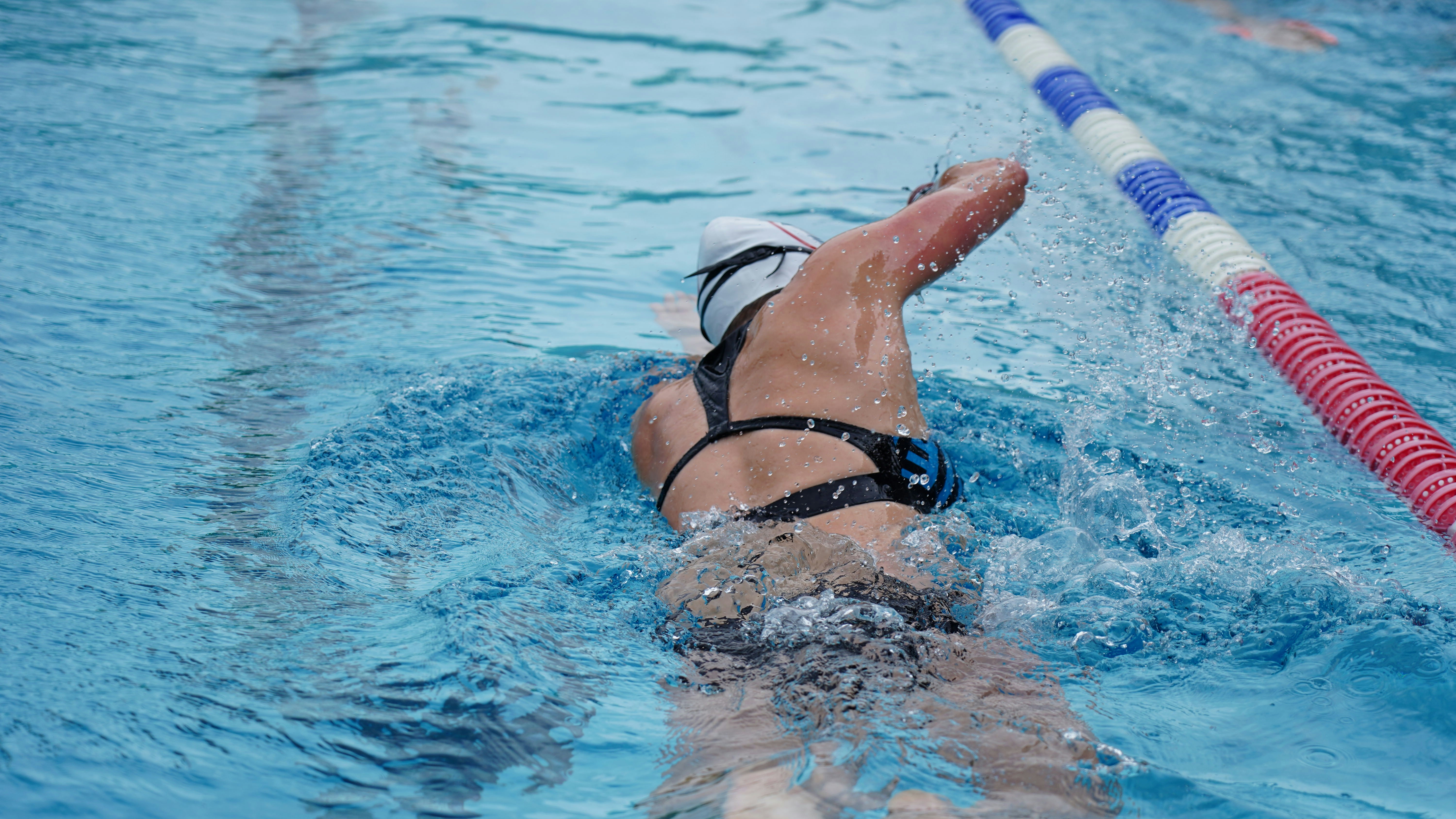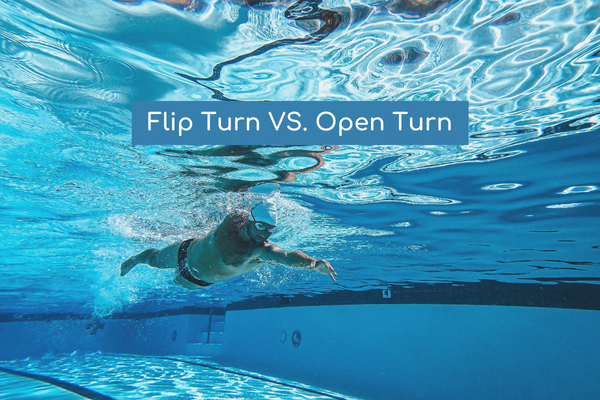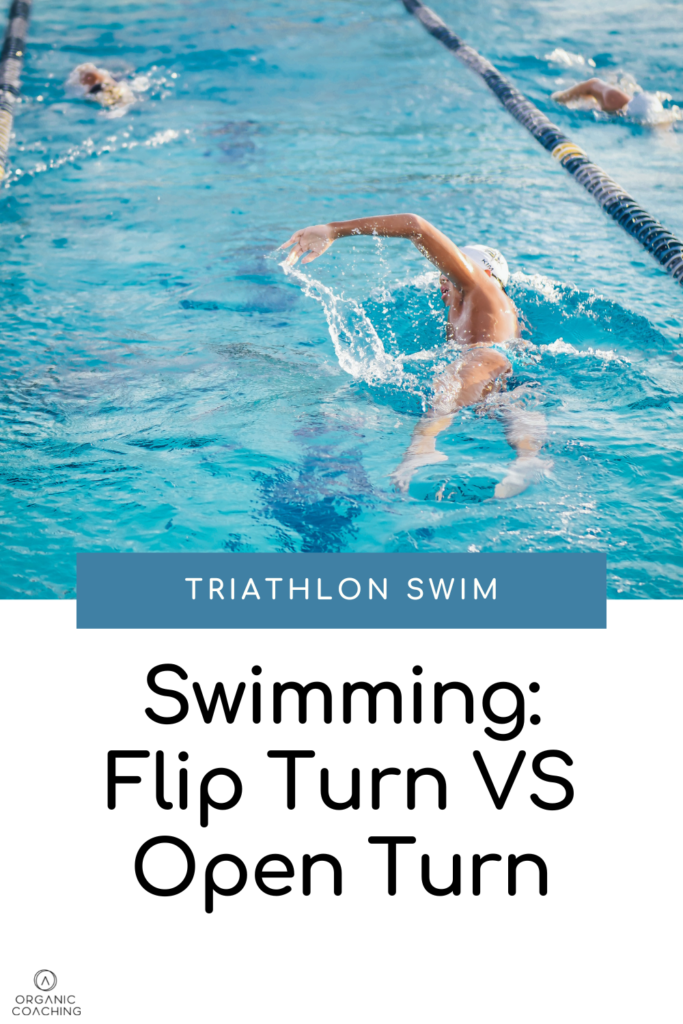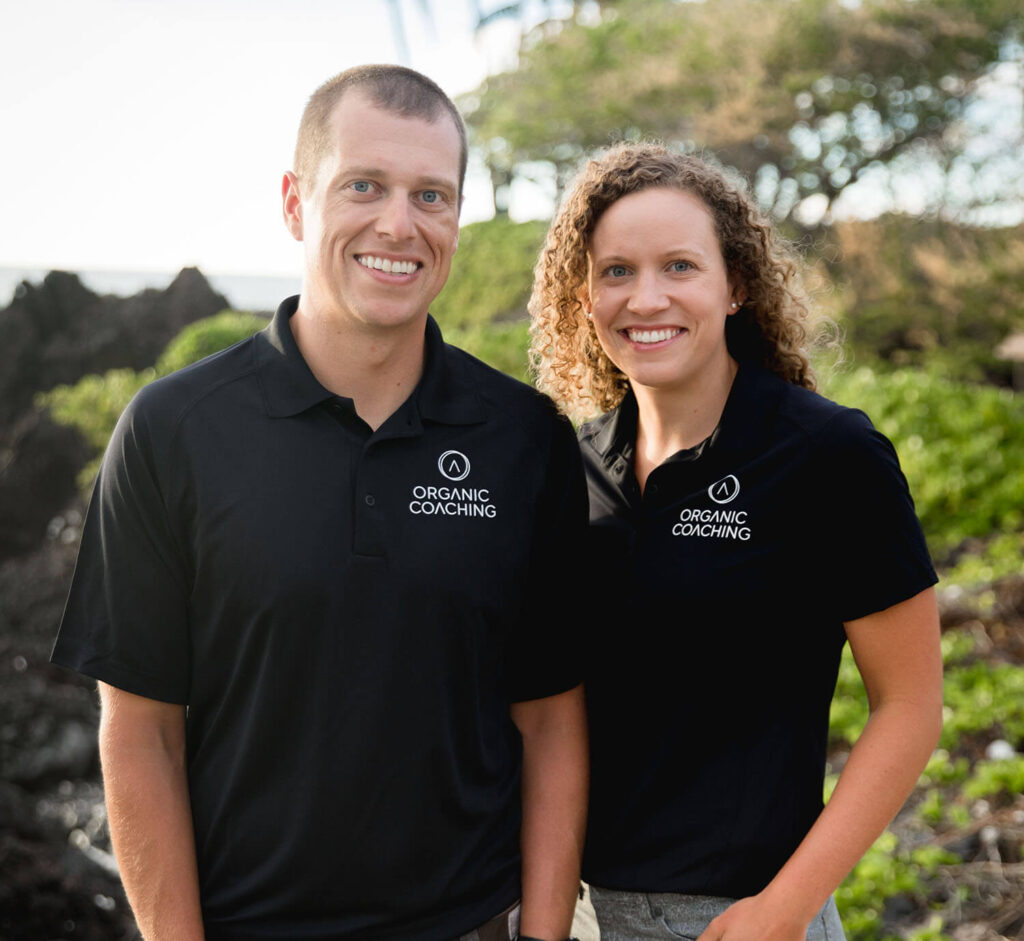

Many of us are in or about to start our off-season. This is a great time for us to work on improving things like form or learning a new skill. All things that will help us get better for the next race season. One skill that many seem to overlook is how they turn once they reach the end of the pool. Many don’t realize there are benefits to one type of turn (Flip Turn) vs another type (Open Trun). Even though you don’t turn around while doing a triathlon in open water.
Open turns are usually done as you reach the wall you touch the wall or grab the edge of the pool with your hand. As you are touching the side of the pool you turn your body pivoting at the shoulder and lift your feet. Then apply your feet to the wall and push off in the other direction. The plus side of doing this type of turn is that it is easy to learn and do. But there are some downsides. Touching or grabbing the side of the pool with the same hand and pivoting at the shoulder over and over again can cause excess strain on the shoulder. Which can lead to shoulder pain. Another thing athletes do many times while doing open turns without noticing is taking a very brief break. You don’t take breaks during a triathlon. So it makes sense to not take all these little “micro-breaks” each time you reach the end of the pool.
Flip turns are done by doing a “summersault” as you reach the wall tucking your knees and chin towards your chest. As you turn upside down you straighten out pressing your feet against the wall and then pushing away from the wall. Then you rotate to the right side up again and continue swimming. There are many benefits to doing flip turns, even for triathletes.
The only real con to doing flip turns is that they are more difficult to do than open turns. They are not as difficult as most think though. Most can learn how to do them in under 30 minutes. Then you progressively get better as you continue to do them during swim workouts.
Just remember that everyone you see at the pool doing flip turns has had to learn how to do them like you and get better at them over time. Taking the time to learn how to do flip turns can make you a better swimmer and a better athlete overall.


Carly and Tyler Guggemos built Organic Coaching in 2014 with a simple philosophy that works. The idea is to take what you have and grow it to get faster, fitter and stronger. And to do it with the time you have – not the time you wish you had.

For athletes who are ready to take their training to the next level while still thriving and succeeding in their professional and family life.
Copyright © 2024 Organic Coaching LLC